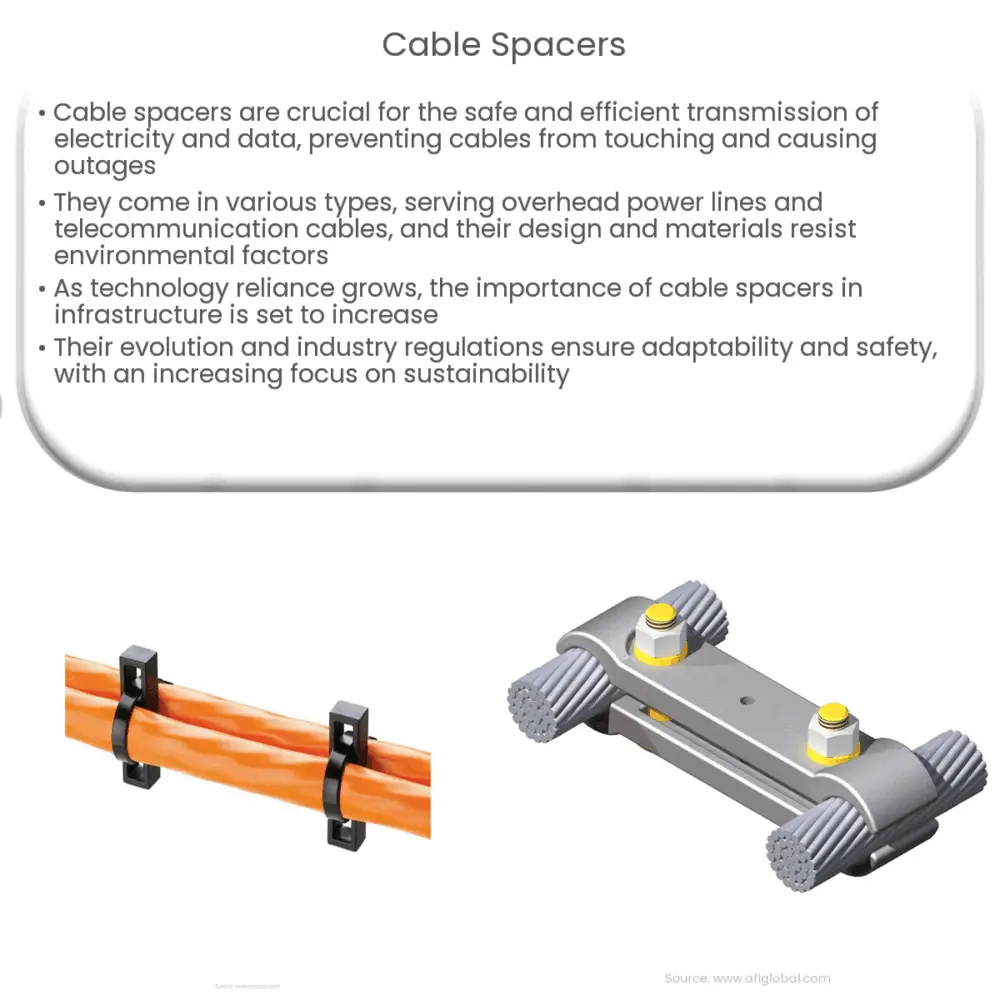Explore the essential role of cable spacers in modern infrastructure, their types, material selection, evolution, and future challenges.

Cable Spacers: An Essential for Modern Infrastructure
As we navigate our way through the digital age, the importance of electrical and communication cables is undeniable. Ensuring their optimal performance and safety is paramount. This is where cable spacers come into play. These humble components may not often capture attention, but they are indeed essential to modern infrastructure.
Understanding Cable Spacers
Cable spacers are devices that help in maintaining the distance and support between conductors of overhead cables, such as power lines or telecommunication cables. Their key function is to prevent these cables from coming into contact with each other or with nearby objects, a situation which can lead to serious incidents such as short circuits or power outages. By keeping the cables spaced apart appropriately, cable spacers ensure safer and more reliable transmission of electricity and data.
Different Types of Cable Spacers
- Line spacers: These spacers are used for overhead power lines. They keep power cables at a specific distance apart, ensuring efficient transmission of electricity while minimizing potential hazards like line clashing.
- Communication cable spacers: These are specially designed for coaxial cables used in telecommunication and cable TV networks. By maintaining proper spacing between these cables, they help in reducing signal interference and boosting network performance.
- Spacer dampers: Designed for high-voltage transmission lines, spacer dampers not only maintain conductor spacing but also reduce the vibration of power lines, thus enhancing the longevity of the cables and improving safety.
The Importance of Material Selection
The materials used for making cable spacers are of significant importance. They must exhibit strong resistance to weather elements, such as UV radiation, extreme temperatures, and precipitation. These materials often include high-grade plastics, such as polyethylene or polypropylene, and sometimes, metals like aluminum or stainless steel.
Installation and Maintenance
Cable spacers need to be installed with care and precision to ensure optimal functioning. Each type of spacer has a specific installation procedure that must be followed rigorously. Regular inspections and maintenance are also crucial to verify the continued integrity of the spacers and prevent potential issues.
The Role of Cable Spacers in the Future
As our reliance on technology grows, so does the demand for secure and efficient transmission of data and power. The need for cable spacers in maintaining this infrastructure is only set to increase, making them a crucial component in the blueprint of our digital future.
Evolution of Cable Spacers
Over the years, cable spacers have seen significant advancements. Innovations in design and material technology have led to the creation of spacers that are more robust, reliable, and adaptable to diverse environmental conditions. The advent of spacer bars with adjustable positions and lengths offers greater flexibility in cable arrangement and reduces the time and cost associated with installation.
Regulatory Standards
Given their critical role, cable spacers are subject to rigorous industry standards and regulations. These standards ensure that the spacers are fit for purpose, safe to use, and able to withstand various environmental and operational conditions. In many countries, utilities and service providers are mandated to use cable spacers that meet these regulatory standards.
Sustainability Considerations
With increasing awareness about environmental sustainability, the cable spacer industry is also making strides towards eco-friendliness. Many manufacturers are now producing spacers from recycled or recyclable materials, reducing the environmental footprint of these components. Moreover, the push for longevity and durability in cable spacer design also contributes to sustainability by reducing the frequency of replacements and the associated waste.
Challenges and Opportunities
While cable spacers play a vital role in our infrastructure, the industry does face challenges. These include the need for continuous innovation to keep pace with evolving cable technologies, the impact of extreme weather events due to climate change, and the need for extensive testing to ensure compliance with safety and performance standards. However, these challenges also present opportunities for research, development, and innovation, driving the industry forward.
Conclusion
In conclusion, cable spacers, although often overlooked, play a vital role in our daily lives. They help ensure the safe and efficient transmission of electricity and data, contributing to the smooth functioning of our cities and communities. As our reliance on digital communication and power supply continues to grow, so does the importance of these humble devices. Embracing innovation and sustainability, meeting regulatory standards, and overcoming challenges will be key for the cable spacer industry as it continues to support our increasingly connected world.

